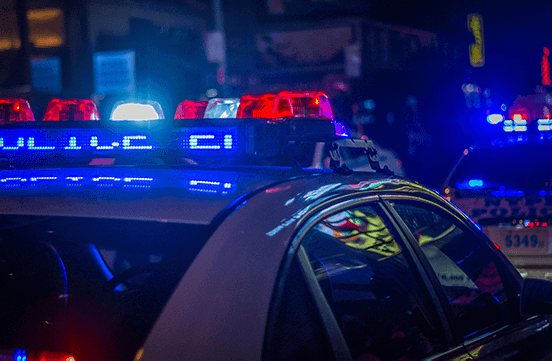 Digital Data is often essential to uncovering the truth in legal cases, and the investigation that led to the identification of the Long Island Serial Killer is a perfect example. This investigation, which included The New York State Police, Suffolk County Police Department, Suffolk County District Attorney's Office, Suffolk County Sheriff's Office, and the Federal Bureau of Investigation, unveiled the power of the historical analysis of digital data and using it to pinpoint a suspect.
Digital Data is often essential to uncovering the truth in legal cases, and the investigation that led to the identification of the Long Island Serial Killer is a perfect example. This investigation, which included The New York State Police, Suffolk County Police Department, Suffolk County District Attorney's Office, Suffolk County Sheriff's Office, and the Federal Bureau of Investigation, unveiled the power of the historical analysis of digital data and using it to pinpoint a suspect.
Two primary methods in this investigation developed crucial information: cellular records and digital life artifacts. We will look at the cellular record evidence for this article, exploring digital life artifacts in the second part of this two-part expose. As you read, consider a recent case; could this type of cell tower analysis, location mapping and timeline have furthered your investigation?
Case Background:
On December 11, 2010, the remains of an unknown woman were discovered near Ocean Parkway, Gilgo Beach, in Suffolk County, New York. Two days later, three additional bodies were discovered in the same area. These victims, which included Maureen Brainard-Barnes, Melissa Barthelemy, Megan Waterman, and Amber Costello, were designated "The Gilgo Four." In March and April 2011, six more sets of remains were found in nearby counties that police later theorized were all the work of a single killer.
Thirteen years after the initial grisly discovery, on July 13, 2023, Rex A. Heuermann was arrested for suspicion of the murders of Melissa Barthelemy, Megan Waterman, and Amber Costello (3 of the originally discovered Gilgo Four). Mr. Heuermann is also the suspect in the murder of Maureen Brainard-Barnes. The connection between these women and Heuermann was due to their involvement in sex work.
The investigative team took great pains to capture all available data by executing over 300 subpoenas, warrants, and other legal orders. These efforts found that Heuermann used four burner phones as well as the phones of his victims. This investigation, like many, was highly complicated and relied heavily on digital evidence.
Maureen Brainard-Barnes
Between July 6th and 9th, 2007, Ms. Maureen Brainard-Barnes was contacted by a burner (disposable) cell phone 16 times and was last seen alive on July 9, 2007. During their investigation, law enforcement used cell tower data to determine that her phone's last known location was in Midtown Manhattan near the 59th St. bridge. There was no further cellular activity until three days later when cellular records showed someone checking the voicemail for the phone near the Long Island Expressway in Islandia.
Melissa Barthelemy
Two years and one day later, Ms. Melissa Barthelemy was last seen in New York City. Like Ms. Brainard-Barnes, Ms. Barthelemy was contacted numerous times by a burner cellphone on July 3, July 6, July 9, and July 10, 2009, which proved to be the last time she was seen alive. Here, investigators used cell tower data to determine that on July 10, the burner phone traveled from Massapequa Park to Midtown Manhattan. Later, Ms. Barthelemy's cell phone traveled from Midtown Manhattan to Massapequa. On July 11, the cellphone was used to make an outbound call to check her voicemail from a cell site near Freeport. Later on the 11th and again on July 12, the cellphone was used to check voice mail messages from cell site locations near Babylon, NY.
Between July 17 and August 26, 2009, the phone was used to make calls to Ms. Barthelemy's family, where the caller provided details regarding her rape and murder. All of these calls were connected to a cell site in Midtown Manhattan.
Megan Waterman
Megan Waterman was contacted by a burner cellphone on June 5th and 6th, 2010. After leaving her hotel, Ms. Waterman's phone traveled to Massapequa Park in New York.
Amber Costello
Amber Costello resided at 1112 America Avenue in West Babylon, and she too was contacted by a burner cellphone. On September 1, she had multiple communications while the burner phone was connected to cell towers in West Amityville and Massapequa Park. The burner phone then traveled to West Babylon, near Ms. Costello's residence. Investigators determined that the following day the burner phone was communicating with Ms. Costello using a cell tower in Midtown Manhattan, then traveled to Massapequa Park.
Triangulation and cellular location data makes for riveting scenes in television crime shows, but rarely do we get a front row seat to observe a Master's class in its application to a cold case. Using this information and the other findings (which we will discuss in a future article), Mr. Heuermann was identified as the primary suspect in the murders. It was now time for analysts to organize, analyze and map the data.
Pointing to Heuremann
The architecture firm that Heuremann worked for was located in Midtown Manhattan. His cell phone was registered to his business but listed his home address for billing - in Massapequa Park. These two locations matched up to the towers that victims' phones and burner phones connected to. Investigators used the billing records of Heuremann's cell phone to acquire general location information. This data showed his personal cell phone in consistent proximity to the burner phones that were used to contact the victims, the victim's phones that were used to check voicemail messages, and the calls made to taunt and harass the Barthelemy family using her cellphone. Investigators determined one harassing call to the family was made from Barthelemy's phone while it was connected to a tower located at 4 Penn Plaza (2,372 feet from Heuermann's office). Another identified burner cellphone made calls while connected to a cell tower only 872 feet from his office.
Cellular Records are not only a reliable approach to identifying a suspect, but they are remarkably well suited for exonerating one as well. In this case, detectives were able to establish an alibi for Mrs. Heuermann based on her cellular billing records, which revealed that her cell phone departed New York on June 4, 2010, returning on June 8, 2010. Again, billing records established that her cell phone traveled from New York to New Jersey on August 28, 2010, not returning until September 5, 2010. This data confirmed that she was out of state for the disappearances of both Waterman and Costello. Records could not be obtained for 2007 because they no longer existed due to retention policies.
What are the lessons? First, it is nearly impossible to exist in our modern world without leaving a digital trail. More digital evidence is created and available than ever before, and there is no substitute. You are missing key evidence if you are not seeking out all available digital information during your investigation. Second, for data to be meaningful, reliable, and representative of the truth, it needs to be reviewed by a professional team of analysts specializing in digital investigations. The data that constitutes digital evidence is not easily obtained or interpreted by the owner of the device, their lawyers, or courts of law. Finally, Digital Data is volatile and will disappear with time. The further you are away from the incident, the fewer clues remain.




